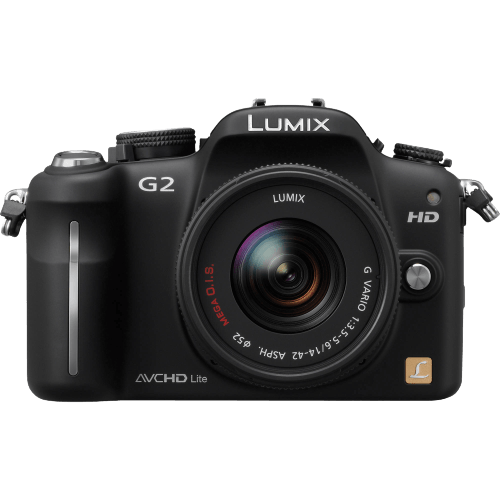Panasonic Lumix DMC G2 Specs and Scores

The Panasonic Lumix DMC G2 scores a 44/100 in our evaluation, with its mirrorless design and 2010 release. At launch, it cost $599 and measured 124 x 84 x 74mm, weighing 428g or 0.94lbs. These specifications, while decent in 2010, now face stiff competition in today’s market. The G2’s score reflects its age and less competitive features, making it a less attractive option for modern photography enthusiasts.
Panasonic Lumix DMC G2 Overview and Optics
The optics of the Panasonic Lumix DMC G2 receive a score of 44 out of 100. This camera features a 12.1-megapixel CMOS sensor, powered by the Venus Engine HD II processor. With a shooting speed of 2.6 frames per second, it is not the fastest camera on the market, but still delivers decent performance. The DXOMARK score for the sensor is 53, which is average among its competitors.
The Micro Four Thirds sensor size and Micro 4/3 lens mount provide versatility in lens selection, allowing users to customize their shooting experience. The camera also has built-in image stabilization, which helps to reduce camera shake and improve image quality. The aspect ratio of 4:3 is standard for most cameras in this category.
Although the Panasonic Lumix DMC G2’s optics do not stand out in today’s competitive market, it still offers a reliable and customizable shooting experience. The camera’s average scores and specifications make it a decent choice for those seeking a budget-friendly option with some flexibility in lens choice and image stabilization.
Panasonic Lumix DMC G2 Video Performance
The Panasonic Lumix DMC G2 has a video score of 47 out of 100. This camera can record standard HD video with a maximum resolution of 1280 x 720 pixels. It is capable of capturing video at a frame rate of 60fps, providing smooth playback. However, it lacks built-in time-lapse functionality.
In today’s market, the G2’s video capabilities fall behind compared to newer cameras with higher resolution options, such as 4K and Full HD. The absence of time-lapse functionality also limits the creative options for videographers.
The Panasonic Lumix DMC G2’s video capabilities are decent but not exceptional. It is suitable for casual users seeking standard HD video recording, but professionals and enthusiasts may find it lacking compared to more advanced options available in the market.
Panasonic Lumix DMC G2 Features and Benefits
The Panasonic Lumix DMC G2 feature score stands at 49 out of 100. This score reflects the camera’s specifications and how they compare to other models in today’s market. The G2 has a 3-inch screen with a resolution of 460,000 dots. This screen is a touchscreen and can flip to provide different viewing angles. However, the camera lacks GPS, Wi-Fi, and Bluetooth connectivity.
In the current market, these features are no longer considered cutting-edge. Many modern cameras now offer higher screen resolutions and advanced connectivity options such as Wi-Fi and Bluetooth. Despite these shortcomings, the Lumix G2 still provides a solid range of features suitable for photographers who prioritize image quality and usability over the latest technology.
The Panasonic Lumix DMC G2 is a reliable camera with a decent set of features. However, it falls short in comparison to newer models with more advanced specifications. Users seeking the latest technology may want to consider other options, while those who value simplicity and dependability will find the G2 a suitable choice.
Panasonic Lumix DMC G2 Storage and Battery
The Panasonic Lumix DMC G2 scores 21/100 in storage and battery. This camera has a single memory card slot, accepting SD, SDHC, and SDXC cards. The battery life is limited to 330 shots, using a DMW-BLB13PP battery. There is no USB charging option available.
These specifications are now dated in the current market, with many cameras offering longer battery life and multiple memory card slots. The lack of USB charging also limits the convenience of the G2 for on-the-go users.
The storage and battery features of the Panasonic Lumix DMC G2 are not competitive in today’s market. Users seeking advanced storage and battery options should consider other cameras.
